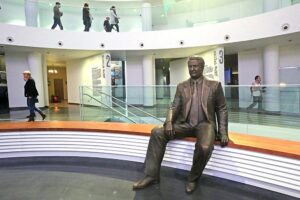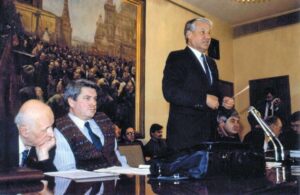Andrei Sakharov’s story is unique in that he started out as a Hero (thrice) of the Socialist Labor, decorated by all the highest state awards and admired by the USSR leadership for his incomparable contribution to the country’s nuclear shield – then, a few years later, he was drawing Khrushchev’s ire by his principled and incorrigible position on the nuclear safety. In Brezhnev’s epoch, Sakharov was branded a traitor, ultimately sent to an internal exile in the city of Gorky. President Gorbachev retrieved Sakharov from the exile, urging him to return to Moscow and “to his patriotic work.” Boris Yeltsin greatly admired Sakharov, finally paying his highest respect by walking, jointly with tens of thousands of Muscovites, behind his hearse through the frozen streets of Moscow in December 1989. From that time on, it seems that Sakharov maintains a position of a unique Russian historic figure in that he is equally revered in his home country and abroad.
As this blog mentioned, even amidst the hardening of the political line in Russia over the past few years, Sakharov remains a positive constant, inspiring new monuments (such as the one unveiled in Mayak building in Nizhny Novgorod in the summer of 2023, and inspiring new exhibits and publications.
Yelzin Center in Yekaterinburg is a unique project, talking about the life of Russia’s first president, Boris Yeltsin. A new exhibition called ‘Petestroika-40’ urges the viewer to re-visit the historic events of the 1990s. Within this exhibit, one learns about Sakharov’s work alongside Yeltsin, in particular, their fight to cancel the absolute grip of the CPSU on the political process in the country.



